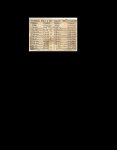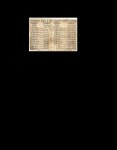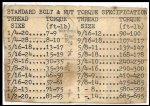Dasgog
Active member
- 182
- 154
- 43
- Location
- Tucson, AZ
Hello!
So I was looking through some pages and game uponhttps://www.steelsoldiers.com/upload/M35/TM9-2320-209-34-2-1.pdf
Great link. But I was wondering, am I to assume that any given bolt size no matter where it goes will have a set torque for it?
Like all and any 9/16 (example) in the truck will have the same torque based on the style of bolt used?
So I was looking through some pages and game uponhttps://www.steelsoldiers.com/upload/M35/TM9-2320-209-34-2-1.pdf
Great link. But I was wondering, am I to assume that any given bolt size no matter where it goes will have a set torque for it?
Like all and any 9/16 (example) in the truck will have the same torque based on the style of bolt used?




